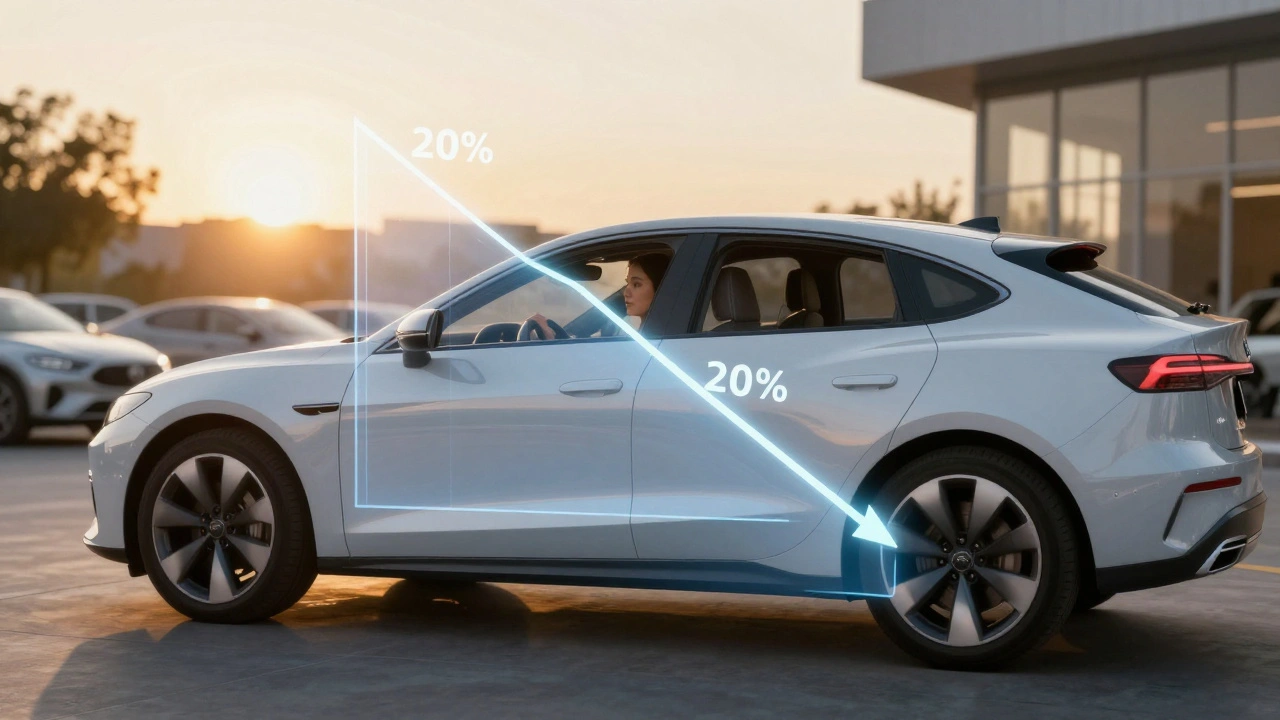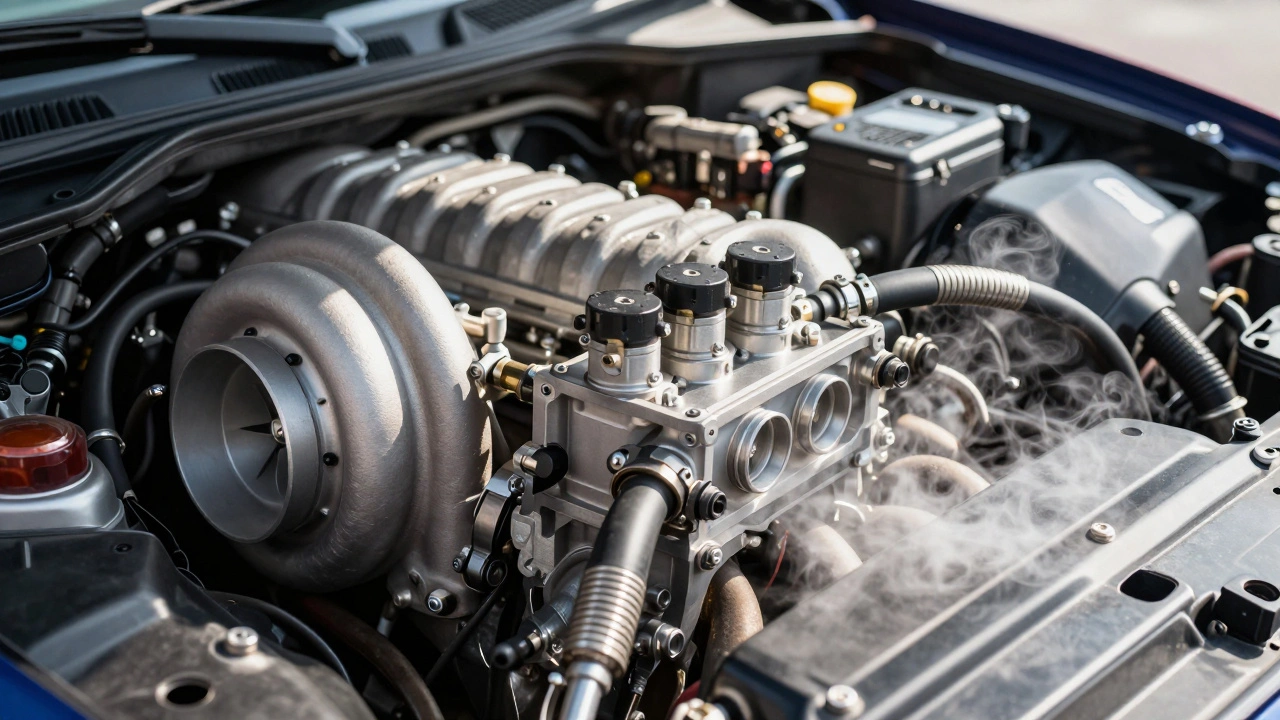Every auto dealer knows the panic that hits when a customer walks in looking for a specific used car - a 2020 Honda Civic LX with leather seats and under 40,000 miles - and you don’t have it. You’ve got five of them in the back, but none match the exact trim. That’s an inventory gap. And in today’s market, waiting weeks for a wholesale auction or a new shipment from a manufacturer isn’t an option. Customers don’t wait. They go to the next lot. That’s where dealer-to-dealer trades come in - fast, direct, and often cheaper than you think.
Why Inventory Gaps Cost You Sales
It’s not just about missing one sale. It’s about losing trust. If a customer comes in three times and you never have what they want, they stop coming back. A 2024 NADA survey found that 68% of used car buyers will switch dealerships after just one failed inventory match. And it’s not just high-demand models. Even mid-tier vehicles like the 2018 Toyota Corolla or 2019 Ford Fusion can sit on your lot for weeks while you wait for a wholesale bid to clear. Meanwhile, your competitors are filling those gaps by trading directly with other dealers.
Dealer-to-dealer trades cut through the middlemen. No auction fees. No waiting for shipping slots. No markup from brokers. You’re trading with another dealer who already has the car you need - and they need something you’ve got. It’s barter, but smarter.
How Dealer-to-Dealer Trades Actually Work
It’s not magic. It’s logistics. Here’s how it plays out in real life:
- You spot a gap - say, you need three 2021 Hyundai Kona EVs with less than 25,000 miles.
- You log into a dealer-only network like Manheim Market Report a digital platform used by over 10,000 U.S. auto dealers to list, search, and trade inventory directly or AutoTrader Dealer Network a closed marketplace where licensed dealers exchange vehicles without public listing.
- You search for the exact model, trim, mileage, and options you need. Filter by location - you want something within 300 miles to avoid high shipping costs.
- You find a dealer in Ohio with three Kona EVs matching your specs. They’re asking $21,500 each.
- You check your own inventory. You’ve got five 2019 Nissan Altima SLs with 50,000 miles. They’ve been sitting for six weeks. You offer to trade two of them for one Kona EV.
- The other dealer says yes. You both agree on a trade value of $18,500 per Altima, and $21,500 per Kona. You pay the $3,000 difference per vehicle via ACH.
- Within 48 hours, the cars are on your lot.
You didn’t pay auction fees. You didn’t pay for advertising. You didn’t wait for a wholesale bid to clear. You moved inventory you couldn’t sell into inventory you could.
What You Need to Trade Successfully
Not every dealer can make this work. Here’s what you need:
- A clean, digital inventory list - No handwritten notes. Use a DMS like CDK, Reynolds, or VinSolutions. Make sure every car has a photo, VIN, trim, options, and condition rating.
- A trusted network - Start with dealers you’ve done business with before. Then expand to regional networks. In the Midwest, dealers in Ohio, Indiana, and Illinois trade frequently. Build relationships. Don’t just treat them as ATMs.
- A pricing strategy - Know your cost, your retail value, and your trade value. Don’t overpay for a trade. Use tools like Black Book a widely used vehicle valuation guide in the U.S. auto industry that provides wholesale and retail pricing data for dealers or Kelley Blue Book Dealer Pricing a trusted source for real-time wholesale pricing used by dealers to set trade values. If you’re trading a 2020 Ford Escape SEL with 42,000 miles, know it’s worth $19,200 wholesale. Don’t give it away for $17,000 just because you’re desperate.
- A way to move the car - You don’t need your own transport. Use a local carrier. Most dealers have a go-to hauler. Expect $300-$600 per vehicle within 300 miles. If you’re trading with someone 800 miles away, the cost jumps - but so does the chance to get rare models.

Common Mistakes That Sink Trades
Not every trade works. Here’s what goes wrong - and how to avoid it:
- Trading a lemon - You trade away a clean 2019 Camry, but the one you get back has hidden frame damage. Always request a pre-trade inspection. Most networks let you request a Carfax or AutoCheck report. If the dealer won’t provide it, walk away.
- Overpaying for a trade - You see a 2022 Toyota RAV4 you need and pay $25,000 for it, even though Black Book says $22,800. Now you’re stuck with a car you can’t sell at retail. Stick to wholesale values. Don’t get emotional.
- Trading the wrong inventory - You trade away your best-selling model to get a car that doesn’t move. Don’t trade your top performers unless you’ve got backups. Keep your top 10 models in stock. Trade the slow-movers.
- Ignoring taxes and titling - In Michigan, you must pay use tax on traded vehicles. In Illinois, the title transfer must be done within 10 days. Know your state’s rules. A bad title can cost you $1,000 in fines and delays.
Real Example: How a Detroit Dealer Filled 12 Gaps in 11 Days
Mike’s Auto Group in Taylor, Michigan, had a problem. Their top three selling models in October were:
- 2021 Honda CR-V EX
- 2020 Toyota RAV4 LE
- 2019 Ford Escape Titanium
They had zero of the CR-Vs, one RAV4, and two Escapes. That’s 12 sales lost in a month.
They logged into Manheim and searched for:
- 2021 Honda CR-V EX, under 30,000 miles, within 400 miles
- 2020 Toyota RAV4 LE, under 45,000 miles
- 2019 Ford Escape Titanium, under 55,000 miles
They found 17 matches. They offered to trade:
- Four 2018 Hyundai Elantras (slow sellers)
- Three 2017 Nissan Sentras (low demand)
- Two 2016 Ford Focuses (outdated)
They got back:
- Five 2021 CR-Vs
- Four 2020 RAV4s
- Three 2019 Escapes
They paid $1,800 in shipping. They made $14,200 in gross profit in the next two weeks. No auction fees. No advertising spend. No waiting.
When to Use Dealer-to-Dealer Trades - And When Not To
These trades work best when:
- You need a specific model, trim, or color that’s in high demand
- You have slow-moving inventory you can swap
- You’re within 300 miles of another dealer with matching stock
- You’re not trying to get the absolute lowest price - you’re trying to get the car now
Don’t use them when:
- You’re looking for a rare model - auctions still win for that
- You don’t have anything to trade - you’re just buying
- You’re trading with someone you don’t know and haven’t vetted
- You’re trading a car with undisclosed damage
Next Steps: How to Start Trading Today
Here’s your 5-step plan:
- Log into your DMS and pull a report of your slowest-moving vehicles. Pick three to trade.
- Sign up for a dealer-only platform like Manheim Market Report or AutoTrader Dealer Network. Most cost under $100/month.
- Search for the top three models your customers ask for but you don’t have.
- Reach out to three dealers with matching inventory. Offer a trade. Be specific: “I’ll trade two 2018 Elantras for one 2021 CR-V.”
- Close the deal, get the car, and sell it. Repeat.
Dealer-to-dealer trades aren’t a secret. They’re just underused. Dealers who use them fill inventory gaps 70% faster than those who wait for auctions. And in a market where time is money, that’s the difference between profit and loss.
Can I trade with dealers in other states?
Yes, but it gets more complicated. Shipping costs increase, and each state has different titling and tax rules. For example, if you’re in Michigan and trade with a dealer in Texas, you’ll pay Michigan use tax on the vehicle’s value. You’ll also need to ensure the title is properly transferred and registered in your name. Most dealers stick to regional trades - within 300 to 500 miles - to keep things simple.
Do I need to pay sales tax on dealer-to-dealer trades?
Not always. Most states exempt wholesale dealer-to-dealer transfers from sales tax. But you’ll still owe use tax when you register the vehicle in your name. For example, in Ohio, you pay use tax on the trade value, not the retail price. Always check with your state’s DMV. Some states require you to file a form (like Michigan’s Form 109) to claim the exemption.
What if the traded car has hidden damage?
Always get a pre-trade inspection. Use a third-party inspector or ask for a Carfax/AutoCheck report. If the dealer refuses, don’t trade. If damage shows up after the trade, you can dispute it with the platform you used - most have dispute resolution policies. But you’re better off preventing it than fixing it later.
How do I know if a trade is fair?
Use Black Book or KBB Dealer Pricing. Compare the wholesale value of what you’re giving and what you’re getting. A fair trade means the values are within 10% of each other. If you’re giving a $20,000 car for a $24,000 car, you should pay the $4,000 difference. Never trade without knowing the numbers.
Are dealer-to-dealer trades legal?
Yes, as long as you’re a licensed dealer. These trades are a standard part of the wholesale automotive system. You must have a valid dealer license, and the vehicle must be titled and registered in your name after the trade. Never trade with someone who doesn’t have a license - that’s illegal and risky.
Start small. Trade one car. See how it feels. Then do it again. In six months, you’ll wonder how you ever waited for auctions.






mark nine
November 29, 2025 AT 01:50One trade last month got me 4 CR-Vs in 36 hours. Sold them all by Friday.
Scott Perlman
November 30, 2025 AT 11:10Eva Monhaut
December 2, 2025 AT 04:25Now I check Manheim every morning before coffee. It's changed my whole business.
Sandi Johnson
December 2, 2025 AT 12:30Tony Smith
December 3, 2025 AT 05:34Rakesh Kumar
December 3, 2025 AT 19:18Buddy Faith
December 4, 2025 AT 00:56Karl Fisher
December 4, 2025 AT 07:41Bill Castanier
December 5, 2025 AT 15:12Ronnie Kaye
December 5, 2025 AT 19:48Thabo mangena
December 6, 2025 AT 11:21